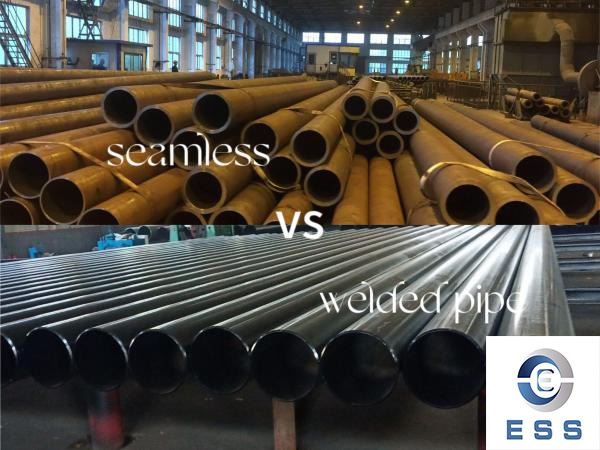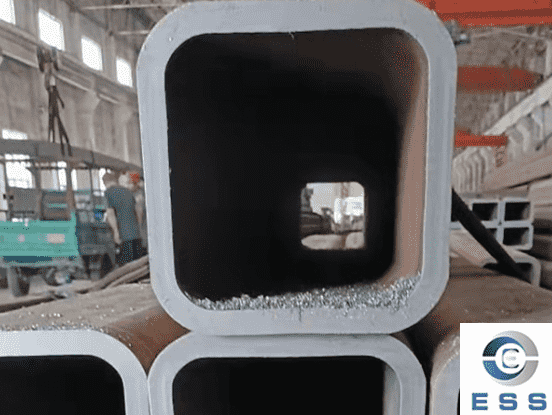The Battle of Seamless vs Welded Pipes
I. Introduction
A. Background and importance of pipes in various industries
Pipes serve as the lifelines of numerous industries, facilitating the transportation of fluids and gases essential for various processes. From transporting oil and gas in the energy sector to conveying chemicals in petrochemical plants, providing water supply in construction, and aiding in exhaust systems in automotive and aerospace applications, pipes play an integral role in the functioning of modern civilization.
B. Distinction between seamless and welded pipes
Seamless pipes are manufactured through a sophisticated process that involves hot or cold drawing of solid cylindrical billets into tubes, resulting in a seamless and continuous structure. On the other hand, welded pipes are created by joining two ends of steel strips or plates together through various welding techniques, producing a longitudinal seam.
C. Purpose of the outline - exploring the pros and cons of both types
This essay aims to present an unbiased and comprehensive analysis of seamless and welded pipes, providing valuable insights into their respective advantages and disadvantages. By understanding their characteristics and applications, readers can make informed decisions when selecting the most suitable pipe type for their specific projects.

II. Seamless Pipes
A. Definition and manufacturing process
Seamless pipes are formed through either the hot rolling, hot extrusion, or cold drawing process. Hot rolling involves heating the billet and then rolling it into a pipe form, while hot extrusion pushes the heated billet through a die to shape the pipe. Cold drawing, on the other hand, pulls the billet over a mandrel at room temperature to form the seamless pipe.
B. Advantages
1.Strength and durability
The absence of a weld seam in seamless pipes grants them exceptional strength and durability. As a result, they exhibit superior resistance to internal and external pressures, making them highly suitable for critical applications in high-pressure and high-temperature environments.
2.Uniformity and reliability
Seamless pipes boast uniform composition and properties throughout their entire length, ensuring a reliable and predictable performance. This characteristic makes them a preferred choice for industries where any failure or deviation could have severe consequences, such as in oil and gas transmission and power generation.
3.Suitable for high-pressure and high-temperature applications
The robustness and integrity of seamless pipes allow them to withstand extreme pressures and temperatures without compromising their structural integrity. Consequently, they are extensively used in demanding applications, including steam pipelines, offshore drilling, and chemical processing.
C. Disadvantages
1.Cost and production complexity
The manufacturing process of seamless pipes involves intricate machinery and specialized techniques, leading to higher production costs compared to welded pipes. The initial investment and the requirement for skilled labor contribute to the higher price.
2.Limited size range
Seamless pipes have limitations in their size range due to the complexity of the manufacturing process. Larger diameters can be challenging to produce and may require substantial time and resources.
3.Longer lead times
The complex manufacturing process of seamless pipes translates into longer lead times for production, which can impact project schedules and delivery timelines.
III. Welded Pipes
A. Definition and manufacturing process
Welded pipes are created by fusing two ends of steel strips or plates together using various welding techniques. Common methods include electric resistance welding (ERW), submerged arc welding (SAW), and longitudinal or spiral fusion welding.
B. Advantages
1.Cost-effectiveness and ease of production
Welded pipes are generally more cost-effective to manufacture than seamless pipes, making them a preferred choice for projects with budget constraints. The availability of raw materials and straightforward production techniques contribute to their affordability.
2.Availability in various sizes and lengths
Welded pipes offer more flexibility in terms of sizes and lengths, allowing for customized solutions to meet specific project requirements. This versatility makes them suitable for various applications, such as structural components in construction and transportation of fluids in water supply systems.
3.Applicability in non-critical applications
Welded pipes are well-suited for applications where high pressure and extreme temperatures are not primary concerns. They are widely used in non-critical processes, such as water distribution, fencing, and general piping in industrial settings.
C. Disadvantages
1.Weaker seam compared to the pipe body
The welded seam may have slightly reduced strength compared to the rest of the pipe body, which could be a point of weakness under certain conditions. However, advancements in welding techniques and quality control have significantly improved the integrity of welded joints.
2.Potential for defects and corrosion along welds
The welding process introduces the possibility of defects and susceptibility to corrosion along the welded seam. To ensure reliable performance, strict quality control measures and appropriate corrosion protection coatings are essential.
3.Lower tolerance for high-pressure and high-temperature environments
While welded pipes can handle many applications, they may not possess the same level of robustness as seamless pipes in extremely high-pressure or high-temperature environments.
IV. Comparison between Seamless and Welded Pipes
A. Strength and structural integrity
Seamless pipes offer superior strength and structural integrity due to their continuous and uniform composition. Welded pipes, while not matching seamless pipes in this aspect, have seen substantial improvements in their welding techniques to minimize weaknesses along the seam.
B. Suitability for different applications
The choice between seamless and welded pipes largely depends on the specific application's demands. Seamless pipes are favored in critical applications where high pressure, extreme temperatures, and structural integrity are paramount. Welded pipes are more appropriate for non-critical processes and projects with budget constraints.
C. Cost considerations
The higher manufacturing cost of seamless pipes can be justified in critical applications that require their superior properties. On the other hand, welded pipes present a more cost-effective solution for projects where absolute strength and uniformity are not the primary concerns.
D. Maintenance and lifespan
Seamless pipes' uniformity and reliability contribute to their longer lifespan and lower maintenance requirements. Properly manufactured and maintained welded pipes, however, can still offer a satisfactory service life, especially in non-critical applications.
V. Industries and Applications
A. Oil and Gas
The oil and gas industry heavily relies on both seamless and welded pipes for exploration, production, and transportation. Seamless pipes are commonly used for offshore drilling and high-pressure transmission pipelines, whereas welded pipes find application in onshore pipelines, gathering lines, and storage facilities.
B. Petrochemicals
In the petrochemical industry, seamless pipes are extensively employed for the transportation of corrosive and high-temperature materials, such as acids, hydrocarbons, and chemical solvents. Welded pipes are often used for storage tanks, auxiliary systems, and less demanding petrochemical processes.
C. Power Generation
Seamless pipes are vital components in power plants' boilers and high-pressure steam lines, where their strength and durability are critical to maintaining safe and efficient operations. Welded pipes can be found in lower-pressure applications within power generation facilities, such as cooling systems and auxiliary piping.
D. Construction
Welded pipes are commonly used in construction projects, such as building frameworks, bridges, and infrastructure, due to their cost-effectiveness and availability in various sizes. Additionally, seamless pipes may be employed in construction projects where high-strength requirements are essential.
E. Automotive
Welded pipes are widely used in automotive exhaust systems due to their cost-effectiveness and ease of manufacturing. However, certain high-performance automotive applications may require seamless pipes to withstand extreme conditions.
F. Aerospace
Seamless pipes are the preferred choice in the aerospace industry for their high-strength properties, ensuring safety and reliability in critical applications, such as aircraft hydraulic systems and fuel lines.
VI. Factors Influencing the Choice
A. Project requirements and specifications
The specific demands of a project, including pressure, temperature, fluid type, and compatibility with materials, significantly impact the choice between seamless and welded pipes.
B. Budget constraints
The availability of financial resources can be a decisive factor, especially when considering the higher cost of seamless pipes.
C. Environmental factors
Environmental conditions, such as corrosive substances or extreme temperatures, must be carefully evaluated to select the appropriate pipe type.
D. Codes and standards
Industry-specific codes and standards may mandate the use of specific pipe types for certain applications to ensure safety, compliance, and regulatory adherence.
VII. Case Studies
A. Real-world examples of seamless pipe applications
Case studies showcasing the successful implementation of seamless pipes in critical applications, highlighting their advantages and exemplary performance.
B. Real-world examples of welded pipe applications
Case studies demonstrating the effectiveness of welded pipes in various projects, considering their cost-effectiveness and suitability for non-critical uses.
C. Performance analysis and lessons learned
An analysis of the performance of both seamless and welded pipes in different applications, focusing on their strengths and areas for improvement, along with the lessons learned from their usage.
VIII. Future Trends and Innovations
A. Advancements in seamless pipe technology
Exploration of ongoing research and development efforts to improve the manufacturing process and properties of seamless pipes. Innovations such as the incorporation of advanced alloys and the optimization of manufacturing techniques could lead to enhanced strength and reduced production costs.
B. Improvements in welded pipe manufacturing
Identification of innovations in welding techniques, such as laser welding and friction welding, and quality control methods to enhance the performance and reliability of welded pipes.
C. Emerging materials and their impact
An examination of new materials, including high-strength steels and advanced composites, and their potential to influence the choice between seamless and welded pipes for specific applications.
IX. Conclusion
A. Recap of the key points
A summary of the significant advantages, disadvantages, and applications of seamless and welded pipes, emphasizing their respective strengths and limitations.
B. Recommendations for specific use cases
Guidance on selecting the appropriate pipe type based on specific project requirements, considering factors such as pressure, temperature, budget, and application criticality.
C. The future outlook for seamless and welded pipes
An optimistic assessment of the future prospects and potential developments in the use of seamless and welded pipes in various industries. As technology advances, both types of pipes are likely to continue finding applications in their respective domains, with further improvements in their performance and cost-effectiveness.
Read more: The Benefits and Drawbacks of Seamless vs Welded Pipes













 Eastern Steel Manufacturing Co.,Ltd not only improve product production and sales services, but also provide additional value-added services. As long as you need, we can complete your specific needs together.
Eastern Steel Manufacturing Co.,Ltd not only improve product production and sales services, but also provide additional value-added services. As long as you need, we can complete your specific needs together.










